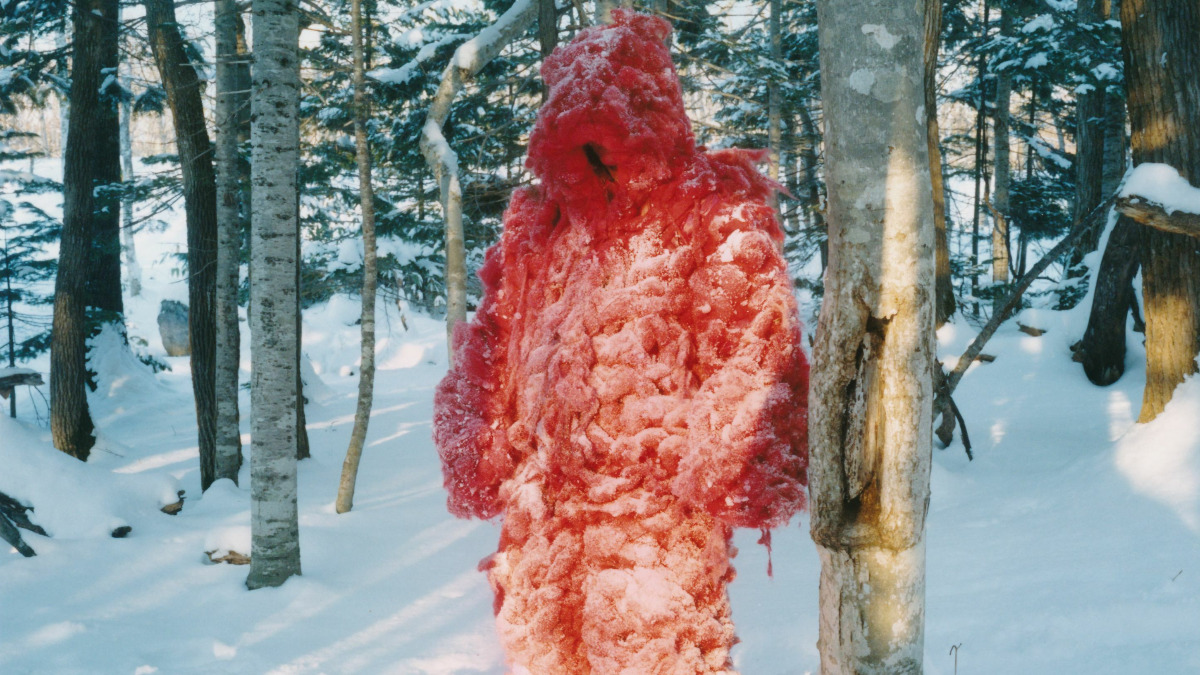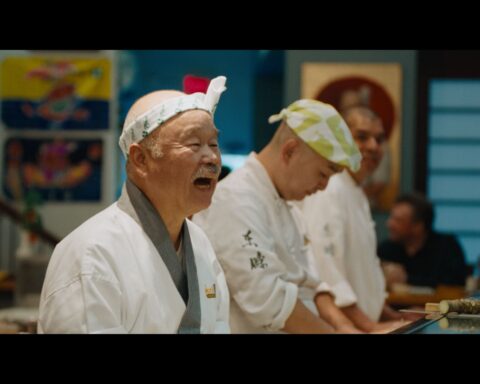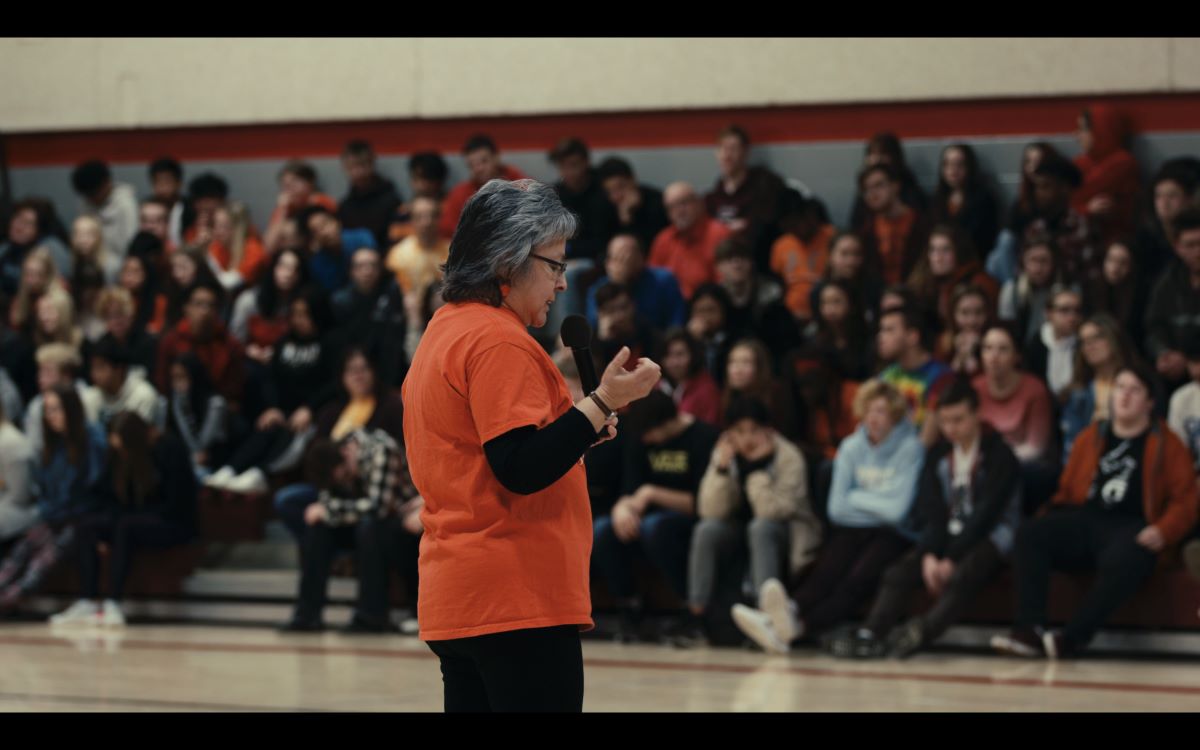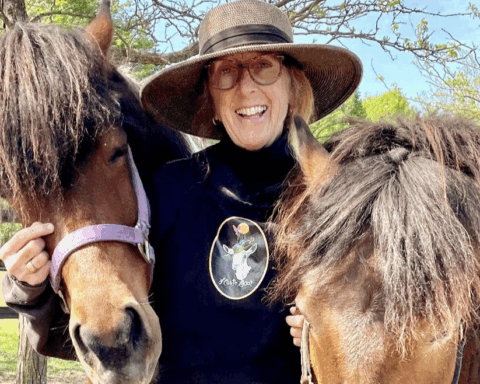Shari
(Japan, 61 min)
Dir. Yoshigai Nao
Clomping through the snow like a knotty blood clot, a bizarre creature tours the Shiretoko Peninsula in Nao Yoshigai’s experimental documentary and feature debut Shari. Credited as “Red Thing,” it’s a person costumed as a nondescript monster, swathed in fat, woolly yarn and clumpy bits of ice. It’s Yoshigai in the suit, a sly, reflexive acknowledgement of the documentary’s narrativization, and one of Shari’s many warm quirks.
The film begins with Ms. Kowada, a baker and shepherd from Shari, a small town on the eastern coastline of Hokkaido. For fifteen years, she’s worked within the community, carefully wrapping and delivering fresh loaves of bread and tending to the livestock. Besides her, there are hunters with a particular reverence for deer meat and flying squirrel aficionados who quietly observe the movements of the forests. These entwined stories string together a locality so potent and empathetically observed—full of dark pink venison and family dinners—one almost forgets the floppy, red behemoth at the film’s centre.
Red Thing’s animus is not immediately felt, though the figure slowly assumes the shape of a local history—of myths and Ainu storytelling—as well as present climate anxieties. Red Thing leaves stains on whatever it comes into contact with, literalizing our environmental ruin. This is played for laughs in a sequence where the thing encroaches on schoolchildren in a gymnasium, its streaky residue resembling blood and spinning the kids into a panic.
“Weather scares me the most,” confesses one of Shari’s residents. In 2019, the town experienced their lowest snowfall in 40 years. The subsequent lack of drift ice impacted the flow of salmon as the deep soil froze and the topsoil was doughy. The townspeople declared it “the year of the sleepless bears” and there was talk of snow in Baghdad. This is climate change on a localized scale, the kind of environmental documentary that curbs perfunctory claims of doom, instead examining the disrupted rhythms of a single township.
Masaya Kitada’s sound design is hypnotic, coalescing Pavlovian bell clanging with environmental moans and an eerie refrain by the town’s children, repeating “Shari, Shari, Shari,” with increasing intensity. The sounds of Shari are at once soothing and unnerving, an aural match line of its subject matter. The film also folds in quaint animations of flying squirrels emerging from tree trunks and Instagram grids as narrative exposition. Yoshigai is maneuvering an impressive array of topics at once—climate anxiety, nomadism, heritage, monstrosity—all the while toying with form that never feels overdrawn.
In a pivotal moment, Red Thing strips from its thick pelt, revealing Yoshigai underneath, and lets out a formidable scream off the edge of a cliff, a jarring cutaway from the serene sites before, as well as a metatextual fracturing of the film’s careful construction. In a way, Shari is just that—the slow unfurl of a scream, a primal release loaded with present frustrations. Part affectionate, fretful documentary, part travelogue, Shari is a remarkable little thing, a creature feature for the modern age.
Shari had its Canadian premiere at the 2022 Fantasia Film Festival.














